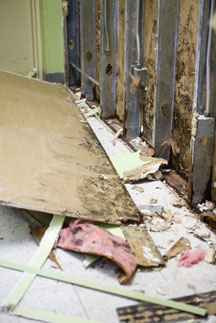
Fungal Growth in Buildings
A newly approved ASTM standard, D7338, Guide for Assessment of Fungal Growth in Buildings, has been developed to provide a go-to reference for anyone testing for mold in buildings.
The new standard was developed by Subcommittee D22.08 on Sampling and Analysis of Mold, part of ASTM International Committee D22 on Air Quality."The lack of consensus standards in the fungal sampling and analysis practice was the driving force behind establishing D22.08," says its chairman, Lisa Rogers, president of Mycometer Inc. "All of our efforts are focused on bringing consistency, reliability and accuracy to the practice."
Rogers notes that D7338 will be useful to a wide range of stakeholders concerned with mold, including consultants, educators, building owners, insurers, lawyers and others.In addition to D7338, D22.08 previously developed D7391, Test Method for Categorization and Quantification of Airborne Fungal Structures in an Inertial Impaction Sample by Optical Microscopy. Two other proposed new standards developed by the subcommittee are currently on ballot: WK17177, Test Method for Examination of Fungal Structures on Tape Lift Samples by Optical Microscopy, and WK22872, Practice for Collection of Total Airborne Fungal Spores via Inertial Impaction Methodology.
"We encourage everyone who has an interest in indoor air quality or mold/fungal assessment, remediation and analysis to get involved in D22.08," says Rogers. "The work ASTM does in D22 has impact around the world."
To purchase ASTM standards, visit www.astm.org and search by the standard designation number, or contact ASTM Customer Relations (phone: 610-832-9585).
CONTACT Technical Information: Lisa Rogers, Mycometer Inc. • Tampa, Fla. • Phone: 813-831-6511 • E-mail: lrogers@mycometer.com O ASTM Staff: David Bradley • Phone: 610-832-9681 • E-mail: dbradley@astm.org O Upcoming Meeting: April 10-13 • April Committee Week • Anaheim, Calif.
 SN Home
SN Home Archive
Archive Advertisers
Advertisers Masthead
Masthead RateCard
RateCard Subscribe
Subscribe Email Editor
Email Editor